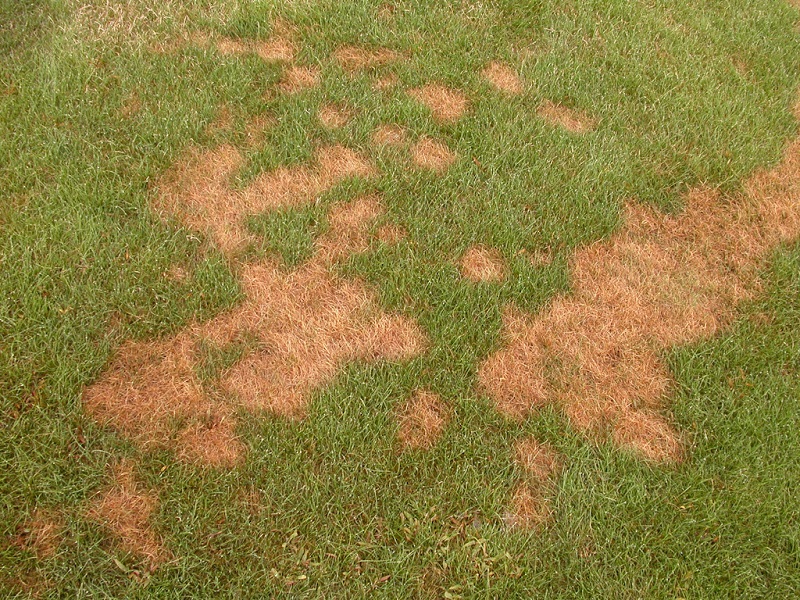
Lawn and grass diseases are abnormal conditions that appear on the lawn caused by an organism or pathogen. They can be difficult to identify because they share many similar symptoms with other lawn diseases and problems.
The lawn disease process
For a lawn disease to exist, three primary components must be given at the same time. These are the pathogens, the correct environment, and the host. If any of the three is missing, the disease cannot thrive.
- The pathogen is the organism that infects the host and harms it.
- The environment is the environmental conditions, such as temperature and humidity that favor the development of the pathogen or reduce the health of the lawn (host).
- The host (host): A variety of grass or species that are susceptible to the pathogen
How to detect lawn diseases on grass
Stains on the leaves: brown areas or stains of dead grass may appear as damage caused by the disease, but does not automatically indicate a disease is present. Mowing the lawn with a dull blade, the activity of harmful insects on the lawn or lack of irrigation can also cause symptoms in the lawn that could be confused with a disease of the lawn.
Prevent turf diseases
Preventive maintenance is one of the best ways to prevent many lawn diseases from infiltrating the garden. Here are some useful tips on how to increase resistance to grass and grass diseases:
Fertilization
Proper fertilization is one of the most important ways to keep the grass robust and disease resistant. But do not be fooled by the “rapid green” effects of nitrogen fertilizers quick and cheap release, as these have also been related to diseases of the lawn (brown spots). Ask your garden store for advice to see what type of fertilizer is best suited for your type of lawn and its conditions.
Straw control
The straw is the layer of organic matter (sticks, branches, stems, etc.) that partially decomposes and is between the grass and the ground. If the straw layer becomes thick, it becomes a breeding ground for insects and diseases. Not only that, but it also kills prevents water and fertilizers from reaching the base. As we will see later, lawn aeration is one of the best ways to help reduce straw.
Lawn aeration
A layer of thick straw and compacted earth are two of the favorite things for lawn diseases to flourish. But regular aeration of the lawn (recommended at least once a year, or two in autumn and spring) can prevent diseases. The grass can be aerated with a rake, with special machines for it or with scarifiers. Aeration is done when the soil is wet, but not wet and not being too deep so as not to spoil the roots. After this process, it is necessary to collect the waste that appears. Find a best lawn mowers for your yard.
Irrigation
Proper irrigation for green spaces also helps fight lawn diseases.
The way in which the lawn is watered and cut can also have a dramatic effect in terms of the fight against lawn diseases. When watering, make sure water enters deeply to allow your bases to gain a firm and deep foothold. Watering early in the morning is better and try to avoid watering at night. Many lawn diseases thrive in the dark and humid environment.
Since the food production part of the plant is closer to the top, it is better not to cut the grass too short. Leaving it longer during the summer also protects the stem from strong sunlight. It is also good to keep the mower blade sharp to avoid disease.
Treatment of lawn diseases
The treatment for lawn diseases varies for each specific type. Red thread turf disease, for example, can be treated with fungicide and the verification of nutritional deficiencies in the grass. The disease from which brown patches appear (one of the most damaging types of lawn diseases) may require more extensive repair of the lawn.
Do not forget: if you are worried about lawn diseases in your garden, there is no time like this to start a preventive maintenance program. Use an appropriate mix of fertilizers, follow a consistent lawn care program and practice central aeration to reduce straw and help stimulate deep rooting. Water deeply and less frequently. And keep the mower blade strong and in good condition. All these things, taken as a whole, will not only give you a garden that is resistant to lawn diseases but a garden that looks very pretty.
